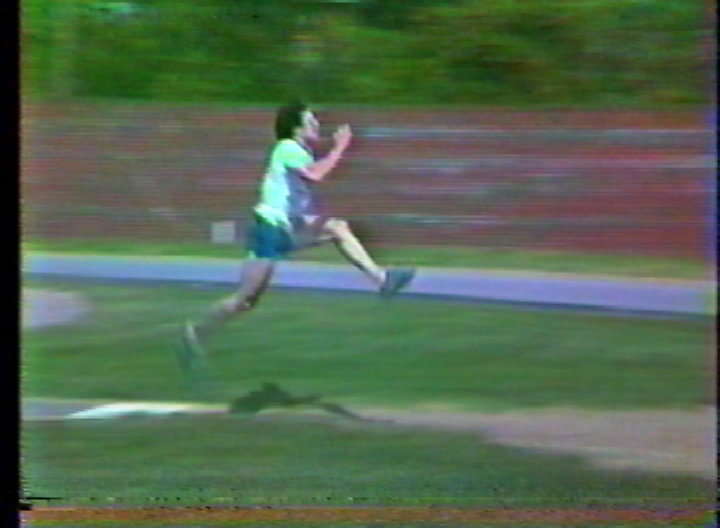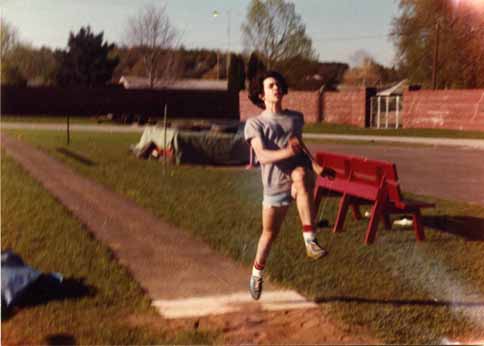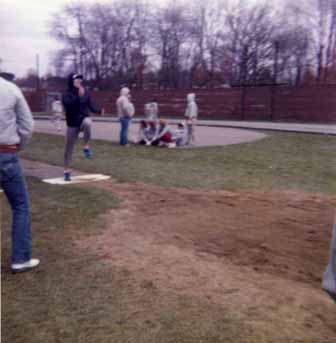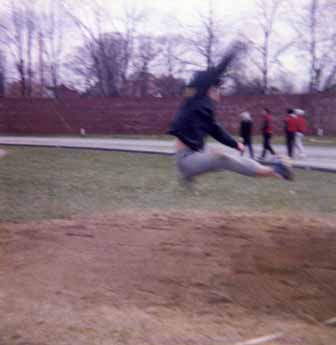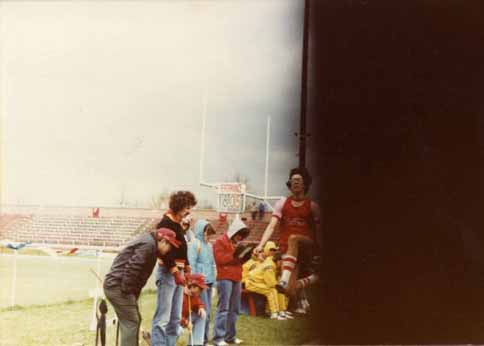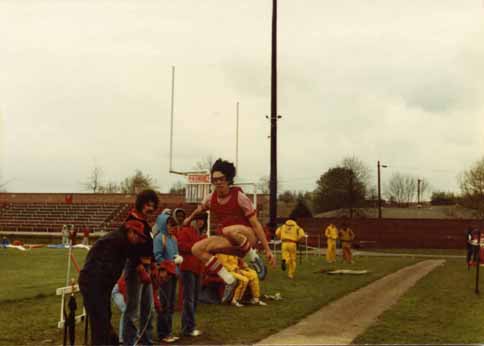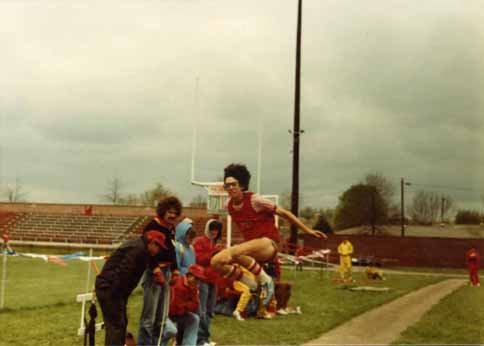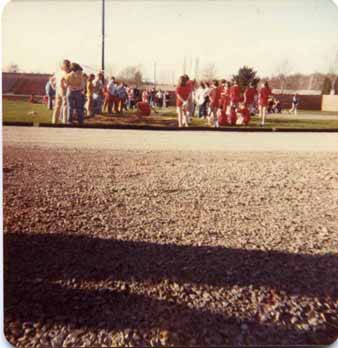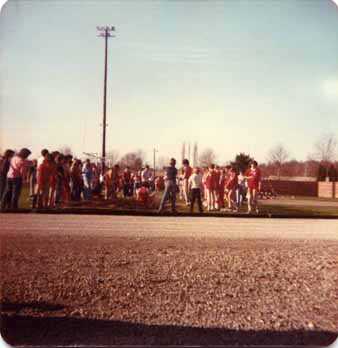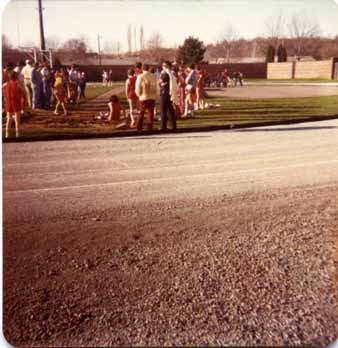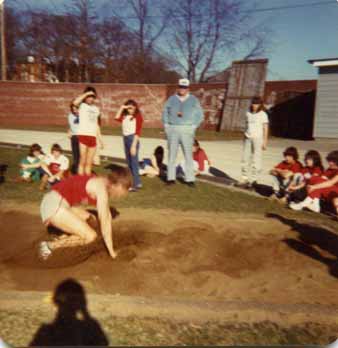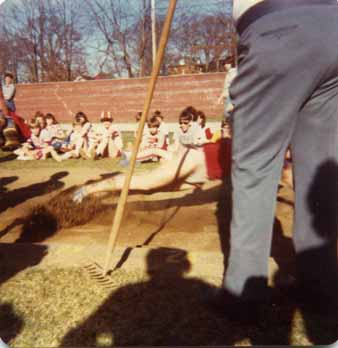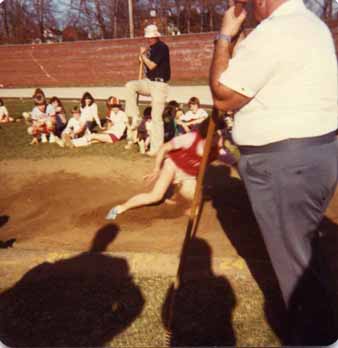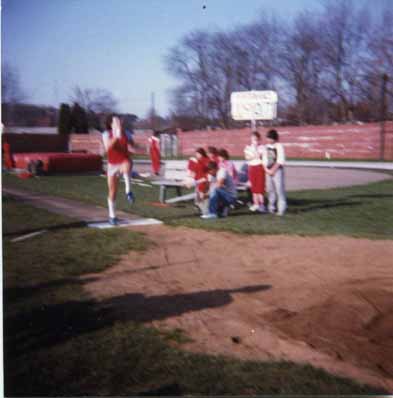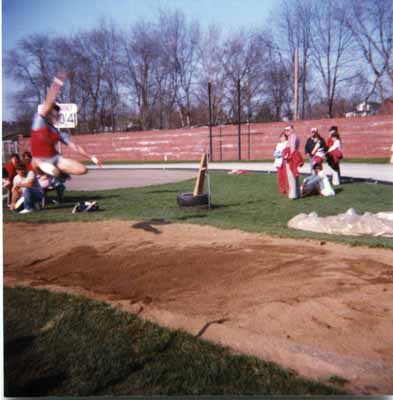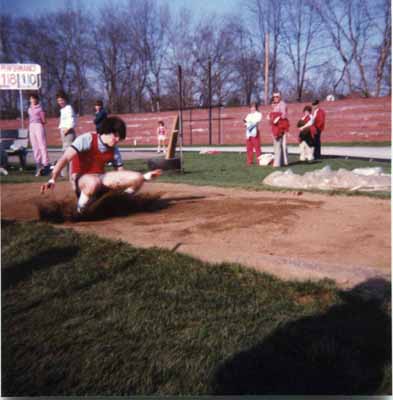Daniel Van Epps long jump practice - eight step popups, full approaches c.1984 .mov format 189.37MB
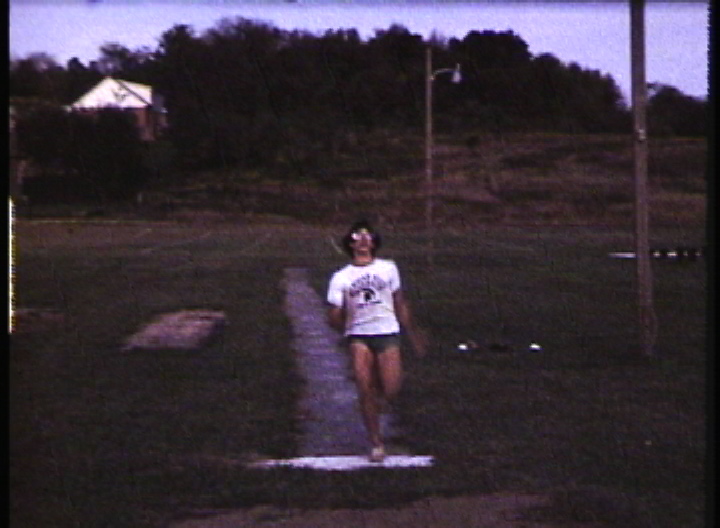
Daniel Van Epps long jump practice at Tuscarawas Central Catholic High School c.1984 .mov format 40.1MB
Critique: The popups are for warming up, particularly to test out the landing pit and adjust to the shock of landing.
The full length approaches are to simulate competition. Notice in approach technique the speed increases until the maximum velocity is reached at the penultimate stride, which is made slightly longer to lower the body's center of gravity. Then the last step is made shorter to force the center of gravity upward during the takeoff. This technique is contrasted against a full-velocity sprint where there are risks of slowing down at takeoff or relying solely upon the takeoff to overcome a level center of gravity. The in-flight technique is the 1.5 step hitch kick, or one and a half leg rotations mid-air. However a jumper with natural spring, such as the ability to dunk a basketball, can at times disregard velocity, the center of gravity vector, and use an in-flight sail technique to achieve great lengths. Yes there is alot of science behind this event!
Daniel Van Epps @ 1984 State Track & Field Finals, Ohio Stadium, Columbus, OH .mov format 114.489MB
Critique and Notes: At the state finals contestants had three attempts. The top 8(?) jumpers advanced to the final round and were given three more attempts. The winners were the contestants' best lengths of their six attempts.
I put everything into the first jump, shown again in slow speed. The last two were shorter, and I did not qualify for the finals, finishing tied for 10th(?). On the first jump, I achieved such great vertical mid air height I partially panicked and dropped my legs prematurely, which shortened the jump distance. The better technique would have been to advance from the 1.5 hitch kick to the 2.5 hitch kick used by jumpers achieving greater lengths, but since I'd never jumped so far before I was done with the 1.5 rotation mid-flight and had nothing to do with my legs afterward since I was still in the air. According to the adjacent pylons, had I at least extended my legs normally and done a summer-sault, the distance would have been about 24', good enough to win 1st place by a foot on that jump alone, and enough to have broken the DHS record. C'est la vie.
The track was torn out of Ohio Stadium a couple decades later, and that was the first and last appearance for me ever in that black hole of the universe.
